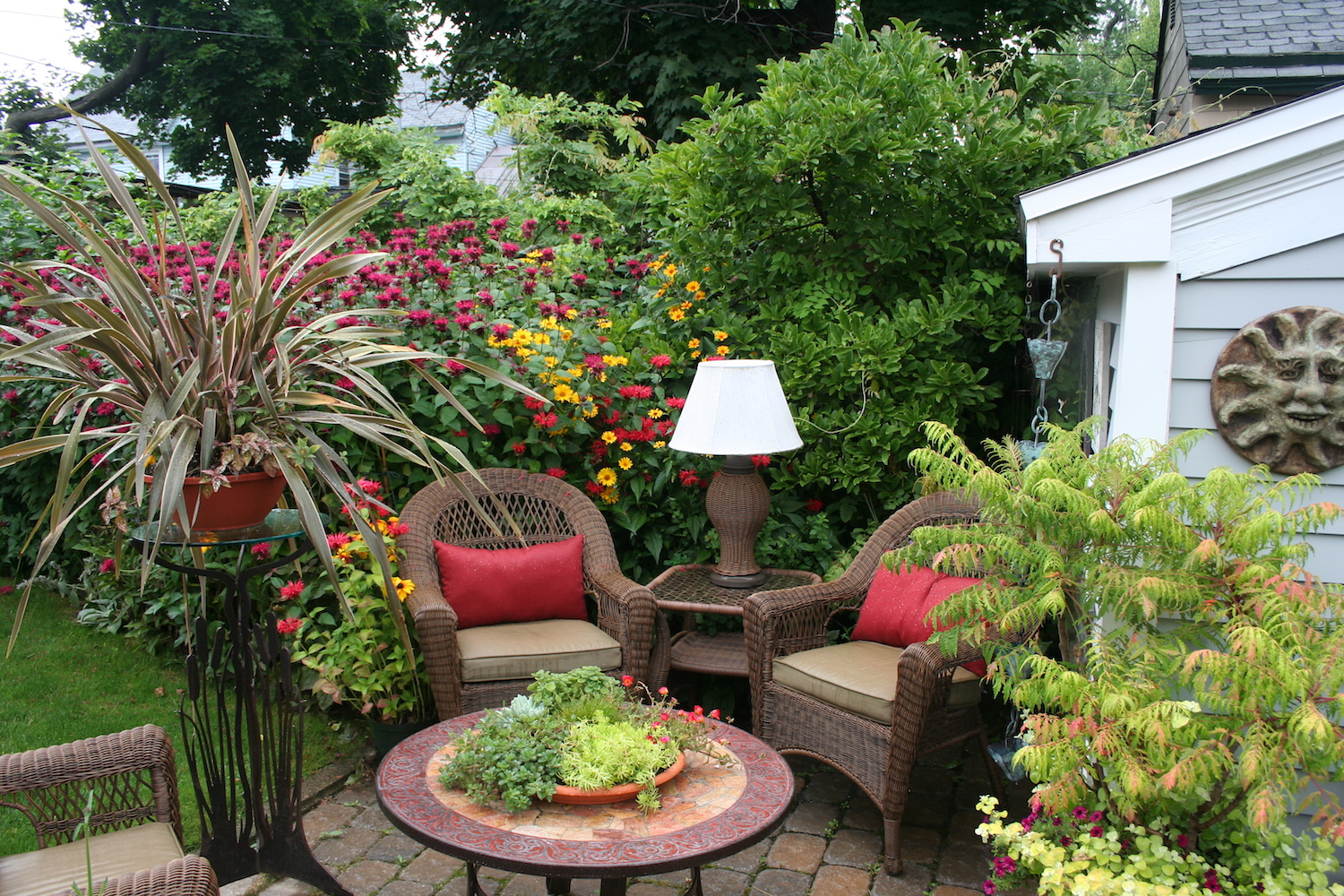This past month, I have been really lucky to attend several garden tours. I started with tours around the Quad Cities in Iowa as part of a Garden Writers Association event, then hit the Northfield Garden Club tour, followed by my trip to Buffalo, N.Y. for three days of nonstop garden visits. In the past two weeks, I’ve been to three more tours. First, the North Oaks Garden Tour, followed by an MSHS event at the wonderful garden of Soni Forsman, water gardener extraordinaire, and this past weekend the Tangletown Garden Tour, which is one of the Twin Cities’ premier tours. Whew!
After seeing so many — and such diverse — gardens, the question becomes: what applies at home? The style of home and neighborhood is a big factor in what kind of garden you grow. I don’t have a small, urban, fenced-in yard where you can hang a mirror on the wall to make things look bigger, like they do in Buffalo, and I don’t garden on several acres where big expanses of lawn are part of the aesthetic. Still, the gardens I toured shared some characteristics that can be applied in any setting. Here are three lessons from garden tours that I learned:

This is a section of a large garden that was all about birds. Native plants, lots of cover and houses welcomed birds at every turn.
They had a theme. Maybe theme is the wrong word. It’s more like a focus or a vision. One of the gardens I loved in North Oaks was a certified wildlife refuge and you could tell that the goal of being a home to birds — there were dozens, even in midday — was a guiding principle in the gardener’s mind. A garden we toured in Buffalo reflected the owners’ love of hosting parties with wild, joyful plantings and a covered cantina-like area in the back corner. One step into that garden and you felt like whooping it up. I’ve written earlier about the idea of naming a garden, but having a theme is what those names reflect. And, themes must come from the gardener’s own aesthetic and sensibility.
They used containers well. Containers can nestle a seating area, provide a greeting at the front porch, or brighten up empty or dull spots in the garden. For a strong impact, use larger containers and keep the plants looking healthy with regular fertilizing (every two weeks, according to one of the gardeners), and plenty of water. Don’t be afraid to change containers with the season. They make great seasonal accents. That’s a lesson from garden tours that any gardener can apply.
They were well edited. Many of the gardens I visited were heavily planted. But, with one exception, I didn’t think any of them were “over-stuffed.” Sometimes the key to a well-designed garden is not so much what you put in, but what you take out. After the tours, I dug into one of my front beds and did some much needed editing — I pulled a tarp full of overgrown plants out of it, giving the remaining plants (and anyone who looks at the bed) room to breath.
I have at least one more tour to attend this year. What lessons from garden tours have you learned?


Wow, how lucky that you were able to go on some many garden tours. Nice!
Hi, I am wondering what you mean when you said the gardens you visited were heavily planted but well edited. Did those gardens plant a lot of just a few plants? I am thinking I am planting too few of too many different kind of plants and getting a very mismatched look – not what I am looking for.
Thanks!
Jodi — Thanks for stopping by! Too many different kinds of plants can make a garden look chaotic. As one designer said, your eye doesn’t know where to go. Many of the tour gardens I’ve seen have a backdrop of a few plants that are repeated in different vignettes with maybe one or two “stars” — unusual or particularly stunning plants — that are focal points. If you are looking for a book on design, I liked “Home Outside,” by Julie Moir Messervy — lots of good examples and basic principles to work with.
Mary – I visited “Elsa’s” garden over the weekend. She passed away in January and I had not been in her garden since 2000. The garden is still being tended by ‘Elsa’s’ gardener and the new owners, but I noticed one thing that was missing – neat clean edges. That definition is a subtle element in making a garden look cared for.
I’m so jealous that you got to go on the Tangletown tour. Your thought about the containers is probably the most overlooked thing in gardening. People seem to have a hang-up about putting a pot, not matter how pretty, in amongst plants! I spent years trying to convince customers at the greenhouse that it was perfectly acceptable (and even desirable) to do so.